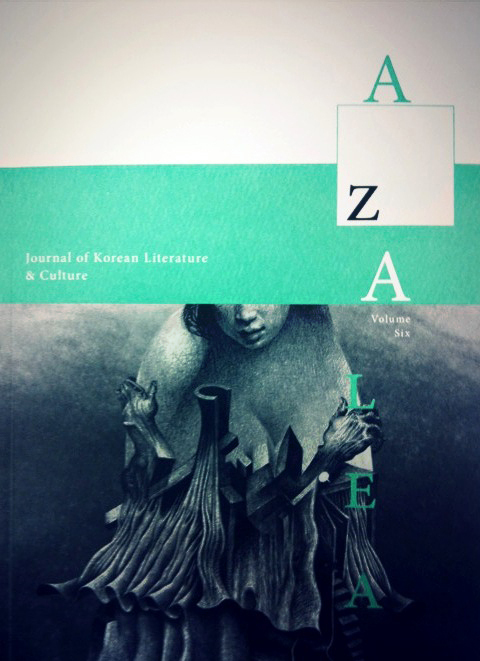What would it be like to dance on the moon?
There, things weigh six times less than they do on Earth. Imagine how far you could go with every jump and leap ― and how light your body would feel.
The latest volume of Azalea, an American, English-language journal featuring Korean literature and culture published by Harvard University’s Korea Institute, features contemporary Korean author Bae Myung-hoon’s (“Tower” “Concealing”) science fiction “Art and the Acceleration of Gravity” ― a story of a Seoulite who dates a dancer who emigrated from the moon.
The tragicomic, highly entertaining short story is impressive in its exploration of art, alienation, migration and modern science and technology. The story, originally written in Korean by Bae, was translated into English by Koo Se-woong for Azalea.
In the piece, the beautiful dancer from the moon continues to dance in Seoul, but the Earth’s gravity ― which is six times the gravity she is used to ― severely affects her career. The book’s protagonist first falls for her appearance, and eventually comes to love her, but never quite understands her art. He attends her shows although he does not understand “performances without a storyline.”
 |
The latest volume of Azalea: Journal of Korean Literature and Culture. (Azalea) |
The story reaches its climax as the dancer invites the protagonist to attend a special performance to be held in the U.S., with the support of NASA, where the stage would “perfectly simulate” the performance environments on Mars, in Earth’s orbit, and on the moon. During the performance, she would reenact her dance from the moon ― including flying and inhumanly high leaps and jumps ― which could never normally be done on Earth.
There is something moving about its tragic ending, which digs deep into the question of what it means to understand a stranger as well as the foreign world to which he or she used to belong.
“Bae Myung-hoon is unique in Korea’s literary sphere for his ventures with the realm of (relatively) hard science fiction,” writes Shin Hae-rin, a Ph.D. candidate in comparative literature at Stanford University.
“In this piece he takes a stylistic detour towards satire and hyperbole, introducing a meta-community on the changing environments of art production and consumption.”
The latest volume of Azalea also includes four other sci-fi short stories by four contemporary Korean writers, as well as an academic essay by Shin. Her essay, “The Curious Case of South Korean Science Fiction: A Hyper-Technological Society’s Call for Speculative Imagination,” gives an analytical overview of the five short stories, including Bae’s, included in the volume.
The other stories are: Kim Kyung-uk’s “Young Hearts Never Grow Old”; Kim Jung-hyuk’s “1F/B1”; Park Min-gyu’s “Road Kill”; and Han Yu-joo’s “Is It Gravitation? Is it Repulsion?”
“The incongruity between the high level of technological immersion seen in South Korea’s contemporary lifestyle and its surprisingly sparse representation in the literary realm can be traced back to the deeply engraved traditional realism that held sway throughout the past century,” Shin writes in her essay.
“The string of traumatic historical turns, beginning with colonization, followed by the Korean War and struggles for political liberalization and industrial progress, left little room for speculations that remain beyond the immediate grasp of reality.
“However, Korea here and now is ready for a new set of inquiries that address the issue of technology as a crucial and legitimate component in our daily interactions and communication.”
By Claire Lee (
dyc@heraldcorp.com)






![[Herald Interview] 'Trump will use tariffs as first line of defense for American manufacturing'](http://res.heraldm.com/phpwas/restmb_idxmake.php?idx=644&simg=/content/image/2024/11/26/20241126050017_0.jpg)
![[Exclusive] Hyundai Mobis eyes closer ties with BYD](http://res.heraldm.com/phpwas/restmb_idxmake.php?idx=644&simg=/content/image/2024/11/25/20241125050044_0.jpg)
